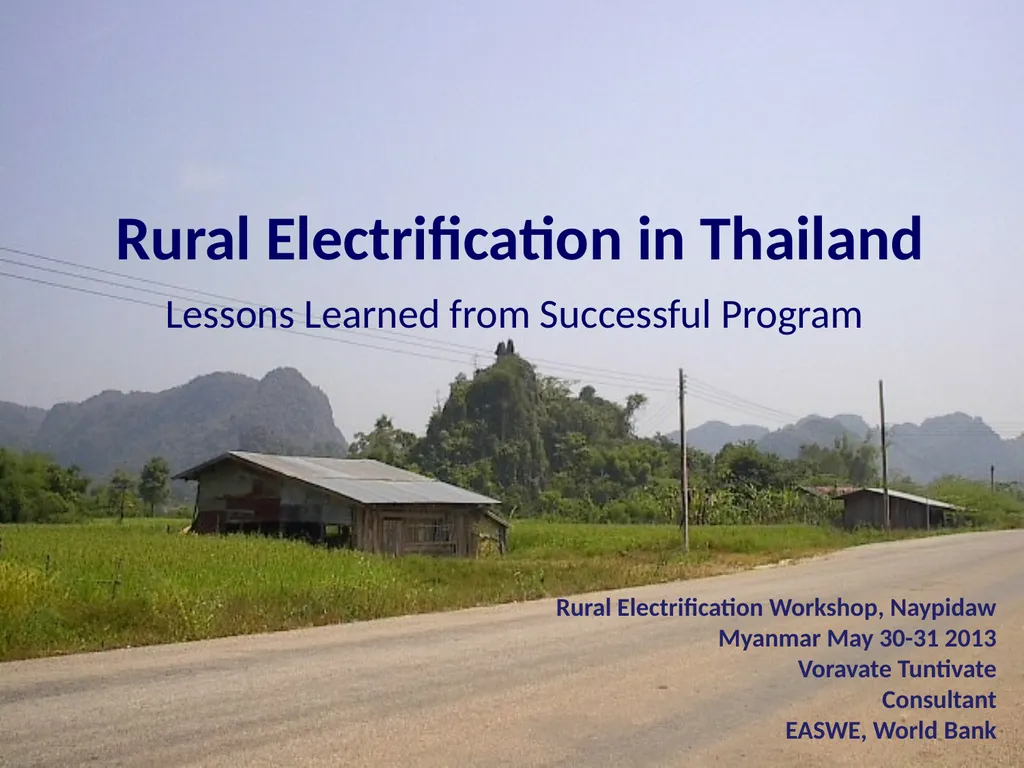
1 Rural Electrification in Thailand Lessons
Author: lois-ondreau | Published: 2025-06-20
Description: 1 Rural Electrification in Thailand Lessons Learned from Successful Program Rural Electrification Workshop, Naypidaw Myanmar May 30-31 2013 Voravate Tuntivate Consultant EASWE, World Bank Outline Background Rural Electrification Planning
Download Presentation
Download the PPT/PDF: Download
Transcript:
Loading transcript…